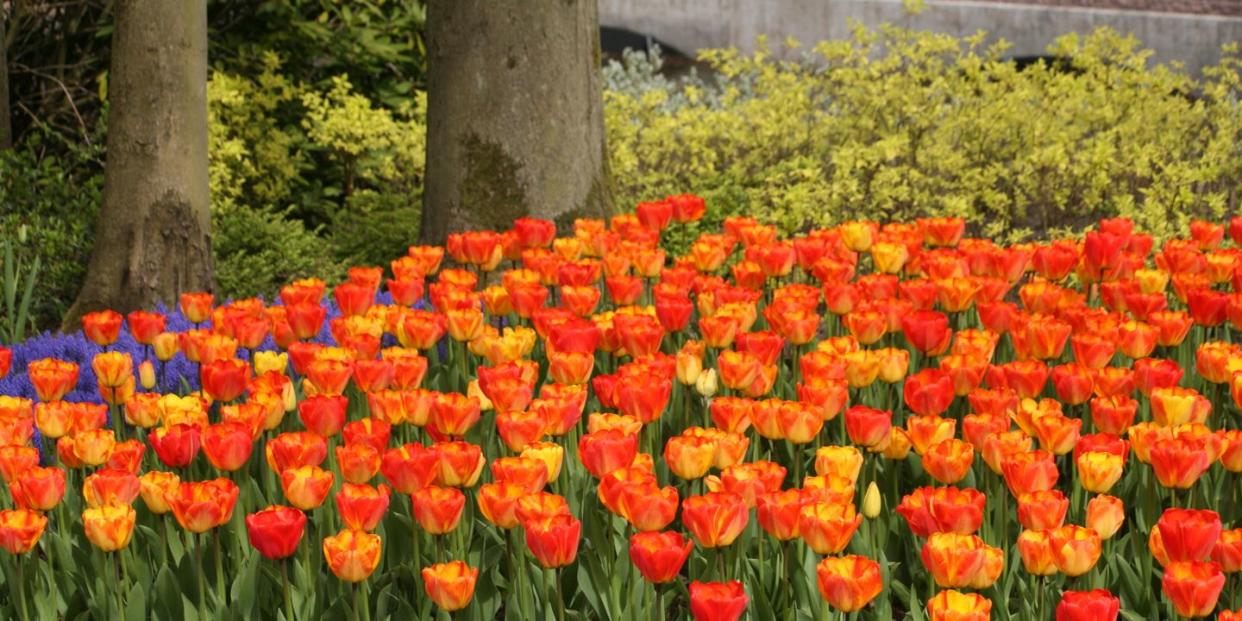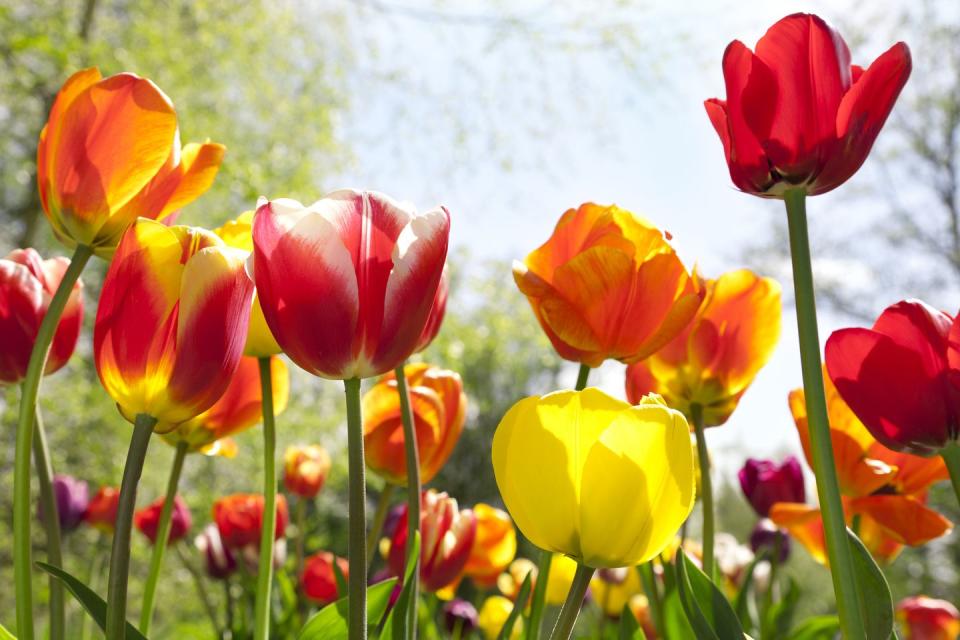How to Plant Tulips and Get Them to Thrive

Tulips are the show-offs of the spring garden. “They come in almost every color, and they are a wonderful bright addition to spring,” says grower Brent Heath of Brent and Becky’s Bulbs. “Some types‚ and in certain parts of the country, tulips are perennial and will come back. But for many parts of the country, they don't bloom again, so we treat them as annuals and plant new bulbs every fall.”
Here’s what you need to know to grow these beautiful spring-flowering bulbs:
What kinds of tulips should you plant?
Tulips come in many different forms, including a single form, multiple flowers on a stem, or doubled, which appear more like peonies. These last a little longer in bloom. Tulips may be early, mid-season or late bloomers. Typically, that means the earliest kinds bloom sometime in March and the latest in May. Almost all of the early bloomers are fragrant.
Tulips grow in USDA Hardiness Zones 2 to 9 (check your zone here). But in zones 8 and 9, you’ll need to make sure bulbs have been pre-cooled (you can buy them that way from suppliers) to ensure they get the cold they require to bloom.
What Tulip Varieties Should I Try?
Early bloomer: Brownie (very fragrant)
Mid-season: Darwin hybrid, such as World Peace (more likely to come back)
Late season: Orange Princess (stunning color and form)
Where can I buy tulips?
Store sell tulip bulbs in late summer and fall. Look for unbruised bulbs. They should appear glossy and firm, and they should have a leathery-looking brownish “tunic” or outer skin on them. Skip the squishy bulbs. Choose those that feel more like a golf ball, than a ping pong ball, in weight. You also can buy from online retailers earlier in the season for a wider selection; they’ll hold onto your order and ship when it’s time to plant in your part of the country.

When should you plant tulips?
Tulips should go in the ground after the first frost but before the ground freezes. That may be as late as December in some parts of the country.
How do I plant tulips?
Tulips need full sun, which means about six hours per day. Put the pointy-side up in the hole, at a depth of about 4 times the height of the bulb. Space them about 3 times their width apart. But don’t plant one here and there in your garden; tulips make more of a visual impact when grouped together.
It’s not necessary to add fertilizer to the hole; instead, top with organic compost to improve the soil. One other note: These are mighty tasty bulbs. Protect them from critters by spraying each bulb with an animal repellant before planting. “They smell sweet, so if you mask the fragrance, critters tend to leave them alone,” says Heath. You also can spray the buds when they’re emerging in spring to deter deer from nibbling.

Another solution: Plant these bulbs in a pot where rodents can’t get to them. Fill a pot ¾ full with soil, place the bulbs shoulder-to-shoulder to fill the pot, and fill to the top of the pot with gravel, sand or soil. Cover with a piece of chicken wire, then add a layer of mulch. Keep the pot in the shade over the winter so the temperature remains stable.
How do I care for tulips?
You won’t know until next spring if your tulips will bloom again. To give them their best shot for a return appearance, remove the foliage about eight weeks after they flower. Don’t do it sooner because the plant needs to make food for next year’s blooms. It’s also a good idea to deadhead, or cut off the little seedpod, once the petals fall off. Otherwise, the plant puts energy into making seeds instead of next year’s flowers. Also, tulips prefer a dry bed during their summer dormancy, so plant them with other perennials and annuals to help them from getting too wet.
Follow House Beautiful on Instagram.
You Might Also Like

